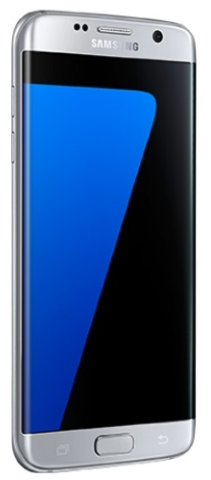In its yearly update, Samsung showed its flagship smartphone duo at the Mobile World Congress on Sunday including the Galaxy S7 and Edge (curved display) models. But beyond the extended hype, some say the pair failed to generate the excitement, traditionally seen in a new consumer product launch.

Samsung introduced just incremental upgrades and in some cases, brought back features (like removable memory /water resistance) that were previously dropped in the Galaxy S6 model line in 2015. But for Samsung the real question is, can incremental improvements sell a consumer upgrade in today’s market? Some think not, and speculate that the premium smartphone category is ripe for form-factor innovations that include a foldable or at least a truly flexible display in order to regenerate the flagging CE mobile device market. Note: Click through the link for updated details on the Ray Soneira DisplayMate.com review of the new Samsung Galaxy S7 and Edge AMOLED display.
Samsung looked to Virtual Reality in its product launch, attaching a Gear VR Headset to every seat in the Press Event, and even brought  Samsung GalaxyS7 now IP68 certified water resistant (again) Shown at MWC 2016 Source: SamsungFacebook’s Mark Zuckerberg on stage to highlight its new features. So, those in the audience got a first hand VR experience of the new smartphone pair, with immersive videos to highlight the Super 2560 x 1440 AMOLED display (5.1- and 5.7-inch diagonal for the S7 and Edge respectively) plus new camera and inductive charging system attached to the battery (3K mAh S7 and 3700 mAh for the Edge). But many believe that’s not enough innovation to justify a premium smartphone upgrade, or to differentiate itself in a crowded premium smartphone market.
Samsung GalaxyS7 now IP68 certified water resistant (again) Shown at MWC 2016 Source: SamsungFacebook’s Mark Zuckerberg on stage to highlight its new features. So, those in the audience got a first hand VR experience of the new smartphone pair, with immersive videos to highlight the Super 2560 x 1440 AMOLED display (5.1- and 5.7-inch diagonal for the S7 and Edge respectively) plus new camera and inductive charging system attached to the battery (3K mAh S7 and 3700 mAh for the Edge). But many believe that’s not enough innovation to justify a premium smartphone upgrade, or to differentiate itself in a crowded premium smartphone market.
All the VR in the world can’t mask the stark reality of Samsung’s current Smartphone conundrum. The company is the largest worldwide seller of these devices, garnering a whopping 70% of annual mobile profits from the Galaxy S line (see WSJ article link below) and 33% of all corporate profits from this one category. The problem is fierce and growing competition at both ends of the device spectrum with Apple taking the market at the high end and all the rest (Huawei, Xiaomi, LG, Sony, ZTE) with traditionally priced flagship models at lower (sub-$600) prices. In addition, there is device feature creep threatening flagship models and coming from the mid-range phones.
Consequently, Samsung is on a long slow decline in the space with $21.5B operating profit in 2015 expected to go down an additional 10% in 2016. That would mark a third year of declining revenue and profits for the company in the smartphone category. To illustrate, the company saw a 60% decline in the all important 2015 holiday quarter (Q4-15) over the same last quarter profit made in the 2013 smartphone heyday. Bloomberg Business reported the operating income for the 2015 3-month period was $5B, and for the year Samsung missed its 80M unit device sales target. And reversing this trend is not easy; HMC Investment analyst Greg Roh (Seoul, Korea) is quoted in the Wall Street Journal as saying: “Samsung will need to introduce next-generation form factors such as foldable devices as soon as possible,” and I agree.
But the company said its looking to high growth emerging markets to help bolster profits, and there again it is finding headwinds, particularly in profitability. Devices targeting India, Indonesia and Russia are typically priced between $75 and $150, with thin profit margin to support corporate earnings for Samsung and its high-end AMOLED displays.
In short, Samsung may find that even with the help of VR and the appearance of poster-boy, Mark Zuckerberg, on the company stage at MWC, without a mid-year launch of some remarkable new form-factor device, based on a flexible display, it may be difficult to – well, bring the must-have new smartphone days back. – Steve Sechrist

